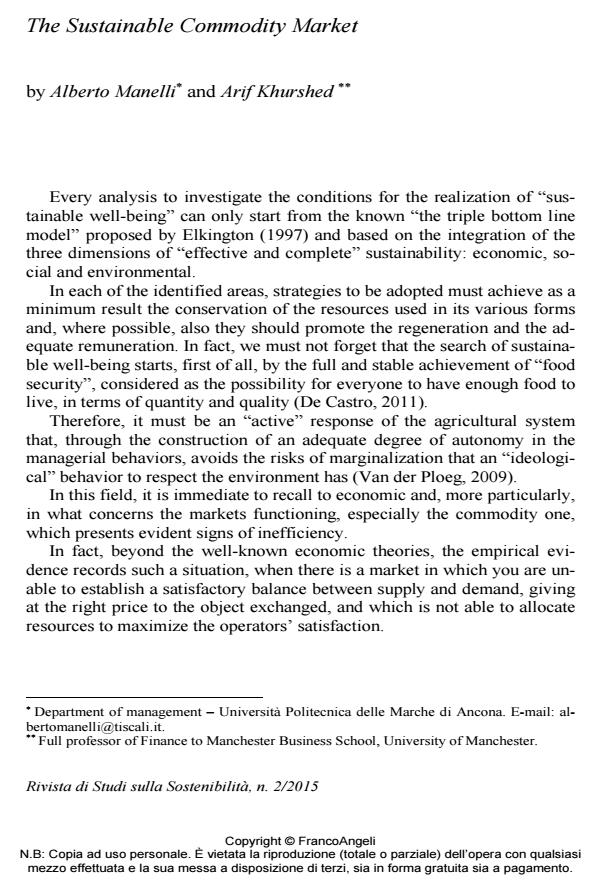The Sustainable Commodity Market
Journal title RIVISTA DI STUDI SULLA SOSTENIBILITA'
Author/s Alberto Manelli, Arif Khurshed
Publishing Year 2015 Issue 2015/2
Language English Pages 12 P. 71-82 File size 149 KB
DOI 10.3280/RISS2015-002007
DOI is like a bar code for intellectual property: to have more infomation
click here
Below, you can see the article first page
If you want to buy this article in PDF format, you can do it, following the instructions to buy download credits

FrancoAngeli is member of Publishers International Linking Association, Inc (PILA), a not-for-profit association which run the CrossRef service enabling links to and from online scholarly content.
The dimensions that comprise the sustainable well-being include a product market that is efficient and capable, on the one hand, to assign to the object exchanged a price representative of its actual value, determined by the encounter between supply and demand; and, second, to allocate the resources available to maximize the satisfaction of operators in the market. In essence, the attainment of sustainable well-being has to pass through the creation of a market for agricultural commodities as "sustainable" in the sense of place which would create the conditions to give satisfaction to those who work.
Keywords: Sustainability, efficiency of the real markets, financial derivatives
Alberto Manelli, Arif Khurshed, The Sustainable Commodity Market in "RIVISTA DI STUDI SULLA SOSTENIBILITA'" 2/2015, pp 71-82, DOI: 10.3280/RISS2015-002007